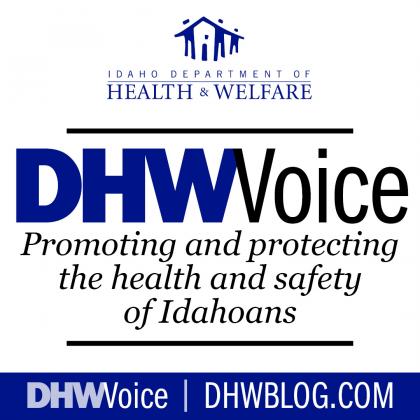From DHW Director Dave Jeppesen: Our five-year Strategic Plan gives DHW vision and accountability
I am pleased to announce the completion of DHW’s new five-year Strategic Plan, a living document that DHW leadership updates each year on the cusp of the new state fiscal year, which renewed July 1.
This year we’re rolling out a new goal to focus on recruiting new employees and retaining the many outstanding employees we have. This new goal integrates with the three goals from our previous Strategic Plan update. Specifically, they are:
- Goal 1: Become an employer of choice for current and future DHW employees
- Goal 2: Protect children, youth and vulnerable adults
- Goal 3: Help Idahoans become as healthy and self-sufficient as possible
- Goal 4: Strengthen trust and confidence in DHW
The Strategic Plan guides the work done every day by dedicated staff throughout the department and focuses on the big ideas we will collectively turn into reality over the next five years. Our plan helps the department organize and continue transformative, long-term work as all eight of our divisions also face day-to-day demands and challenges.
The plan is organized by the previously mentioned four goals, each with supporting objectives and tasks. Following are highlights focusing on the plan’s strategic objectives:
Goal 1: Become an employer of choice for current and future DHW employees
- Use engagement surveys and employee feedback to improve the employee experience.
- Reduce the department’s employee turnover rate.
Goal 2: Protect children, youth, and vulnerable adults
- Ensure children who have experienced abuse or neglect, who can be served safely in their homes, receive preventative in-home services.
- Implement the Youth Empowerment Services Implementation plan and the Idaho Behavioral Health Council strategic action plan to improve the behavioral healthcare system in Idaho so that children, youth and their families and adults get the services they need, when they need them.
- Implement three new crisis system components for adults with developmental disabilities so they can access a full continuum of crisis care that supports them to remain in communities when possible.
- Engage in collaborative activities for seniors that support access to services and improve their well-being.
Goal 3: Help Idahoans become as healthy and self-sufficient as possible
- Reduce Idaho’s suicide rate from 23.8 to fewer than 19 per 100,000.
- Address health disparities in Idaho communities by implementing at least three strategies that focus on the social determinants of health.
- Prevent or reduce the impact of adverse childhood experiences (ACEs) across the lifespan of Idahoans by creating a coordinated DHW program delivery framework.
- Develop and implement cross-divisional initiatives to help reduce healthcare workforce shortages.
- Evaluate opportunities to limit Medicaid spending growth through legislatively proposed and approved cost-containment strategies.
Goal 4: Strengthen trust and confidence in DHW
- Enhance public health and safety by improving the effectiveness and visibility of regulatory activities, reducing regulatory burden, and improving stakeholder engagement in these processes.
- Strengthen the trust and confidence of those we serve, the media, employees, legislators, and other stakeholders through communication and customer experience strategies.
- Mature our resources management strategies related to money, people, physical space, and technology, ensuring resources are allocated in ways that best serve the people of Idaho.
Read the plan in full at the DHW website. Also, throughout the year, I’ll post updates about our collective work to meet these goals and objectives here on the DHW blog.
I hope you have a safe and healthy weekend!
The Idaho Department of Health and Welfare is dedicated to strengthening the health, safety, and independence of Idahoans. Learn more at healthandwelfare.idaho.gov.



Join the Discussion
Please note the following terms of participation in commenting on the DHW Voice blog.
To ensure a productive discussion you agree to post only comments directly related to this post and to refrain from posting obscenities; threatening, abusive or discriminatory language; sexually explicit material; and other material that would violate the law if published here; promotional content; or private information such as phone numbers or addresses. DHW reserves the right to screen and remove inappropriate comments.